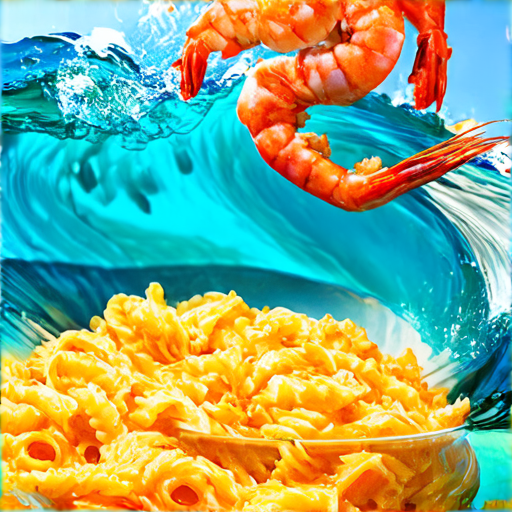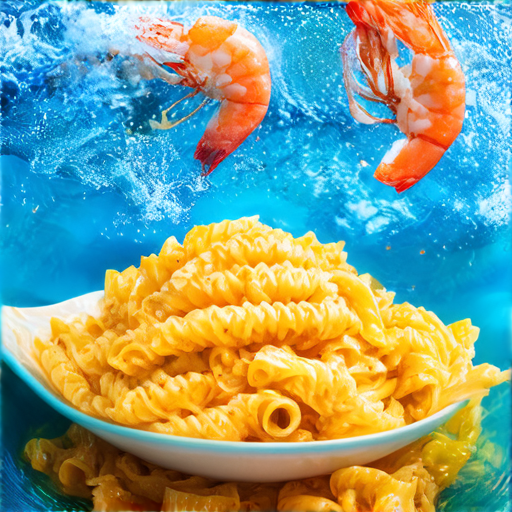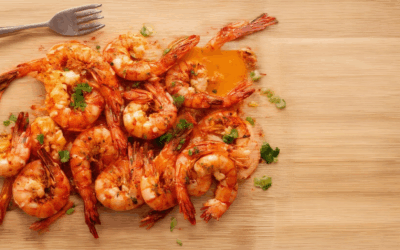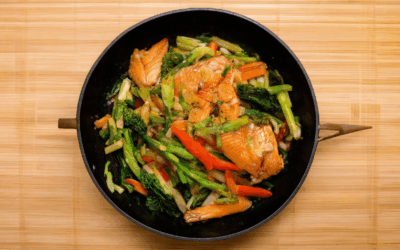Shrimp scampi pasta is a beloved dish enjoyed by food enthusiasts worldwide, combining the delicate flavor of shrimp with the rich, creamy sauce that perfectly coats the pasta. Whether you’re a seasoned cook or new to the kitchen, mastering the art of creating a flavorful shrimp scampi pasta can elevate your dining experience to new heights. This article dives into the essential components of shrimp scampi sauce, explores the best recipes, and provides expert tips to ensure your dish is as delicious as it is visually appealing. From understanding the secrets behind the perfect sauce to discovering how to pair different pasta types, this comprehensive guide will walk you through everything you need to know to create a memorable meal. Let’s embark on a journey to uncover the techniques, variations, and tricks that will make your shrimp scampi pasta stand out.

What is Shrimp Scampi Sauce Made Of?
Shrimp scampi sauce is a flavorful condiment typically made from a combination of butter or olive oil, sautéed garlic, lemon juice or zest, and a variety of herbs such as parsley, dill, or chives. The sauce may also include spices like paprika, cayenne pepper, or onion powder, along with shallots or onions for depth. White wine is often added to enhance acidity, and the mixture is reduced to concentrate the flavors. Additional ingredients like capers or anchovy fillets can be included for a briny kick, while a touch of sugar or salt ensures balance. This versatile sauce can be adapted with personalized touches, such as adding cream or yogurt for richness or hot sauce for heat, making it a flexible component for various seafood dishes.
How to Get Scampi Sauce to Stick to Pasta
To ensure your scampi sauce clings perfectly to your pasta, follow these simple steps:
- Heat the Sauce: Make sure your scampi sauce is heated through. A warm sauce has a better chance of sticking to the pasta.
- Add Cheese and Emulsify: Incorporate a small amount of grated Parmesan or Pecorino Romano cheese into the sauce. This helps thicken it and creates a better binding with the pasta.
- Use Starchy Pasta Water: When tossing the pasta, gradually add starchy pasta water (a few tablespoons per serving) until the sauce reaches your desired consistency. This starch acts as a natural binder.
- Mix Thoroughly: Toss the pasta and sauce together in the pan over medium heat, allowing the sauce to coat the pasta evenly. Remove any excess moisture by draining slightly before serving.
- Serve Immediately: Serve your pasta dish immediately to keep the sauce from separating and to ensure maximum adhesion.
By following these steps, you’ll achieve a delicious, sauce-coated pasta dish every time!

Shrimp Scampi vs. Shrimp Alfredo
Shrimp scampi and shrimp alfredo are two popular seafood dishes that share similarities but have distinct differences in flavor, preparation, and presentation. Below is a comparison of the two:
- Base Ingredient: – Shrimp scampi typically features large shrimp, often breaded with breadcrumbs and seasoned with garlic, lemon zest, and sometimes parmesan cheese before being pan-fried. – Shrimp alfredo is part of the classic fettuccine Alfredo dish, where shrimp is incorporated into a creamy Parmesan cheese sauce.
- Cooking Method: – Scampi is generally cooked quickly in a skillet or pan, achieving a golden brown crust. – Alfredo involves simmering a sauce on the stovetop, creating a rich, velvety texture.
- Sauce and Flavor Profile: – Scampi tends to have a lighter, crispier texture with a tangy, buttery flavor. – Alfredo is known for its creamy, cheesy, and slightly sweet taste, complemented by the freshness of shrimp.
- Serving Suggestions: – Scampi is often paired with pasta, rice, or vegetables, and can be served over a bed of spaghetti or risotto. – Alfredo is traditionally served with fettuccine, though it can also pair well with tortellini or other pasta shapes.
- Pairing with Wines: – Scampi pairs nicely with light, crisp whites like Pinot Grigio or Sauvignon Blanc. – Alfredo complements full-bodied reds such as Chianti or Merlot, as the richness of the sauce balances the wine’s flavors.
Both dishes are delicious and versatile, offering a delightful combination of textures and flavors. Whether you prefer the crispy coating of scampi or the creamy richness of alfredo, they remain timeless choices for seafood lovers.

Can I Use Frozen Shrimp for Shrimp Scampi?
Yes, you can use frozen shrimp for shrimp scampi, though there are a few considerations to keep in mind for optimal results:
- Defrosting: Thaw the shrimp in the refrigerator overnight or under cold running water until fully thawed. Alternatively, cook them directly from the frozen state if preferred, adjusting cooking time as needed.
- Dryness: Pat the shrimp dry with paper towels to remove any excess moisture, which prevents them from absorbing too much water during cooking and ensures a firmer texture.
- Cooking Method: Cook shrimp on a hot skillet or grill for 2-3 minutes per side. Adjust the cooking time slightly if using frozen shrimp to ensure they don’t become overcooked and remain tender.
- Taste and Texture: While frozen shrimp may not have the exact same texture as fresh, they can work well in most recipes. For the best flavor and texture, aim to use shrimp that’s been previously frozen without prior freezing affecting its quality.
When using frozen shrimp, ensure they are properly defrosted or prepared to cook from frozen, and adjust cooking techniques to maintain the desired texture and flavor in your shrimp scampi dish.
How to Pan-Fry Frozen Shrimp Without Thawing
To successfully pan-fry frozen shrimp without thawing, follow these steps for a quick and tasty meal:
- Heat Your Pan:** Place a medium-sized skillet over medium-high heat. Allow it to heat thoroughly.
- Add Oil or Butter:** Introduce a small amount of oil or butter to the pan to prevent sticking and ensure a golden sear.
- Prep the Shrimp:** Arrange the frozen shrimp in a single layer within the pan. Avoid overcrowding to encourage proper searing.
- Cook the First Side:** Cook the shrimp for 2-3 minutes per side until they turn opaque and slightly pink. Remove them from the pan immediately upon achieving the desired color.
- Flipping the Shrimp:** Return the shrimp to the pan for another 2-3 minutes on the other side to finish cooking. Ensure they don’t burn by keeping an eye on the heat level.
- Enhance Flavor:** While the shrimp are cooking, add minced garlic, lemon juice, salt, and pepper to the pan. Optionally, incorporate spices like paprika or cayenne for added zest.
- Serve Immediately:** Transfer the cooked shrimp to a plate and serve them hot, ideally with sides like rice, noodles, or a stir-fry mixture.
By following these steps, you can enjoy tender and flavorful pan-fried shrimp without the need to thaw them beforehand, saving valuable time and effort.

How to Thicken Shrimp Scampi Sauce
Thickening shrimp scampi sauce can be achieved through several methods. Here are some effective approaches:
- Using Cornstarch Slurry: Mix 1 tablespoon of cornstarch with 2 tablespoons of cold water to create a smooth slurry. Gradually whisk this into the sauce until it begins to thicken. Continue stirring until the desired consistency is reached.
- Adding Flour: In a separate bowl, mix 2 tablespoons of all-purpose flour with 2 tablespoons of melted butter to create a roux. Slowly pour this mixture into the sauce, whisking constantly, until the sauce thickens.
- Incorporating Heavy Cream: Stir in 1/4 cup of heavy cream to the sauce. This will not only thicken the sauce but also enhance its richness and creaminess.
- Reducing the Sauce: Simmer the sauce on low heat, allowing the liquid to reduce until it reaches your desired thickness. This method preserves the natural flavors while concentrating the sauce.
- Using Arrowroot Powder: Dissolve 1 teaspoon of arrowroot powder in 2 tablespoons of cold water and whisk it into the sauce. This will create a smooth, glossy finish.
- Tomato Paste Addition: For a slightly tangy thickness, stir in 1 tablespoon of tomato paste to the sauce. This adds depth and helps thicken it further.
Steps to Achieve the Perfect Consistency
- Heat the Butter Gently: Make sure your butter is fully melted and slightly bubbly but not browned before adding it to the sauce to prevent splitting.
- Gradual Incorporation: When adding thickeners like flour or cornstarch, always do so gradually and continue whisking to avoid lumps.
- Simmer Slowly: Allow the sauce to simmer on a low heat to allow the flavors to meld and the sauce to thicken evenly without burning.
Ways to Use Thickened Scampi Sauce
- Toss with pasta or rice for a creamy texture.
- Drizzle over grilled shrimp or other seafood dishes.
- Mix into a creamy sauce for vegetables or potatoes.
By using these methods, you can easily achieve the desired thickness for your shrimp scampi sauce, ensuring a rich and flavorful dish every time.




0 Comments